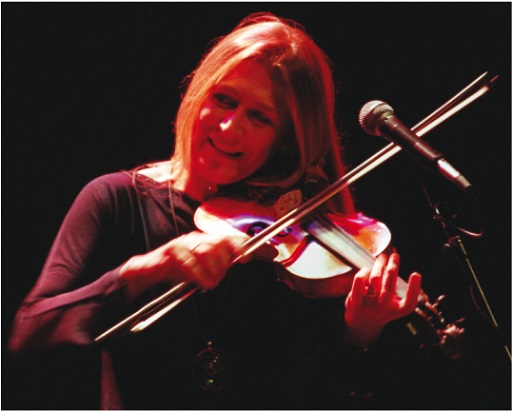14 Studying form in traditional dance music
The alphabetic designations used to represent song forms are also used to describe instrumental music. Traditional dance music from north-western Europe makes widespread use of the form AABB, for instance. As the letters suggest, music in that form incorporates both contrast and repetition: it features two contrasting parts (A and B), each of which is immediately repeated (AA and BB). Moreover, it is not uncommon to perform the entire four-part pattern two or more times (AABB, AABB and so on). Musical form often incorporates nested structures – repetitions within repetitions.
‘Fiddle Blast’, a set of tunes performed by Aly Bain, Jenna Reid, Mairéad Ní Mhaonaigh and Stuart Duncan for the BBC/RTÉ Transatlantic Sessions programme, starts off with a tune in AABB form, ‘The Teetotaller’. In Activity 10, you will attempt to distinguish its sections.
Activity 10

Listen four or five times to ‘The Teetotaller’ and try to determine where the sections of the AABB form occur. The form is heard three times in total during the extract. Write down the track time at the beginning of each section, using the appropriate boxes in Table 12. You can always pause the recording to write in the table. This task may initially seem more difficult than determining the form of a song, since there are no words to help you to orient yourself, but repeated listens should reveal the structure.
| Section | Track time |
|---|---|
| A | |
| A | |
| B | |
| B | |
| A | |
| A | |
| B | |
| B | |
| A | |
| A | |
| B | |
| B |
Discussion
The musicians cycle through the AABB form as follows:
| Section | Track time |
|---|---|
| A | 00:00 |
| A | 00:08 |
| B | 00:16 |
| B | 00:24 |
| A | 00:32 |
| A | 00:40 |
| B | 00:48 |
| B | 00:56 |
| A | 01:04 |
| A | 01:12 |
| B | 01:20 |
| B | 01:28 |
Don’t worry if your answers are substantially different to these, but do listen to the recording again, following along with the completed version of Table 12. It may help to listen for how the melody moves into a higher register at the beginning of the B section and back into a lower one when the A section returns.
An even finer-grained analysis of ‘The Teetotaller’ is possible. For example, section A can be divided into two shorter subsections, as shown in Table 13. These subsections begin with the same melodic material and might thus be understood as variations of one another. These have been notated as a and a′, using lower-case letters to indicate that they are subsections of the larger A section and the prime symbol (′) to indicate that the second subsection is a variation (rather than a straightforward repetition) of the first.
You may wish to listen to ‘The Teetotaller’ again to try to follow the sequence of subsections.
| Section | Subsection | Track time |
|---|---|---|
| A | a | 00:00 |
| a′ | 00:04 | |
| A | a | 00:08 |
| a′ | 00:12 |
